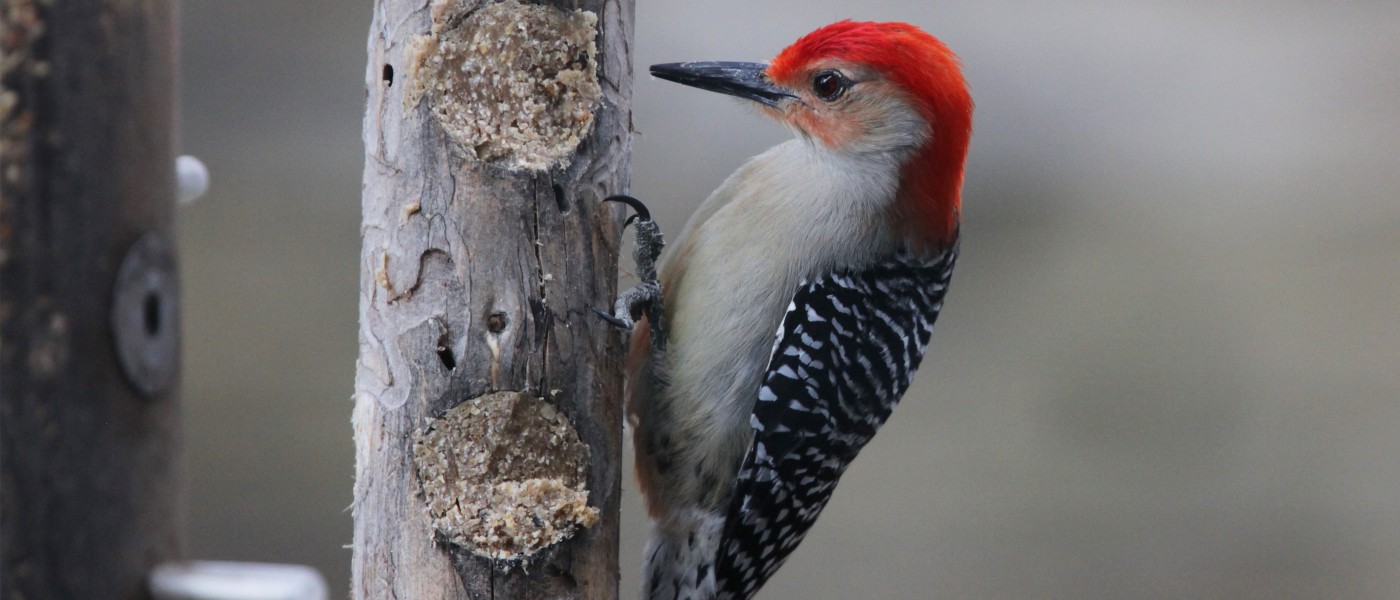Birds of Brooklyn: Red-Bellied Woodpecker
In his classic birding book, Birds of the New York Area, published in 1964, John Bull, former director of the ornithological department of the American Museum of Natural History, dedicated two pages to the red-bellied woodpecker (Melanerpes carolinus). He wrote that in the 19th century, sightings of this bird in NYC were considered accidental or casual. It wasn’t until the 1950s that more than one bird a year was spotted. The red-bellied woodpecker was a southern species then, but it appeared to be expanding its range. Bull predicted that “judging from its northward spread and increase locally, breeding can be expected in the near future.”
Today, the red-bellied woodpecker is indeed a regular breeder here in the metropolitan area. The bird nests and fledges young in Brooklyn Botanic Garden, Prospect Park, Central Park, and almost every other large park nearby. Its range has been extended all the way to southern Canada. Most birds are undergoing population reductions, but not the red-bellied woodpecker. Instead, it seems to have adapted very well to the changing environment, withstanding habitat destruction and the challenges associated with climate change. One possible factor: These woodpeckers are frequent visitors at backyard feeding stations. They love suet—especially peanut butter suet—and feed on black oil sunflower seeds that people often stock in their feeders. They are also essentially nonmigratory and therefore not faced with the stresses of moving from one location to another twice a year.
This bird is noisy, colorful, a good size, and a pure delight to watch and appreciate. For attracting a mate, it likes to drum its beak on hollow logs, branches, snags, aluminum gutters or anything that makes a lot of sound.
Newbie bird-watchers often see a red-bellied woodpecker and say, “Oh, look at the red-headed woodpecker!” It is true that the red-bellied does have a lot of red on its head, but it is nothing like the red-headed woodpecker, a much rarer species. Seeing the two species together will quickly settle the question of who is the red-headed and who is the red-bellied woodpecker.
The red-bellied woodpecker gets its name from the small amount of red on its belly, but it’s true that it’s hard to see unless you take the bird and turn it upside down, which is unlikely to occur. However, it’s fairly easy to identify by the zebra striping on its back. I have heard some people refer to this bird as the “zebra-backed woodpecker” to try to avoid the confusion.
Late April, during breeding season, is the perfect time to see and hear a red-bellied woodpecker in a large city park or public garden. After locating the bird, I recommend that you just close your eyes and listen to appreciate the “thunder” it creates.
The Birds of Brooklyn series looks at some of the most familiar and fascinating birds that call Kings County their habitat.


